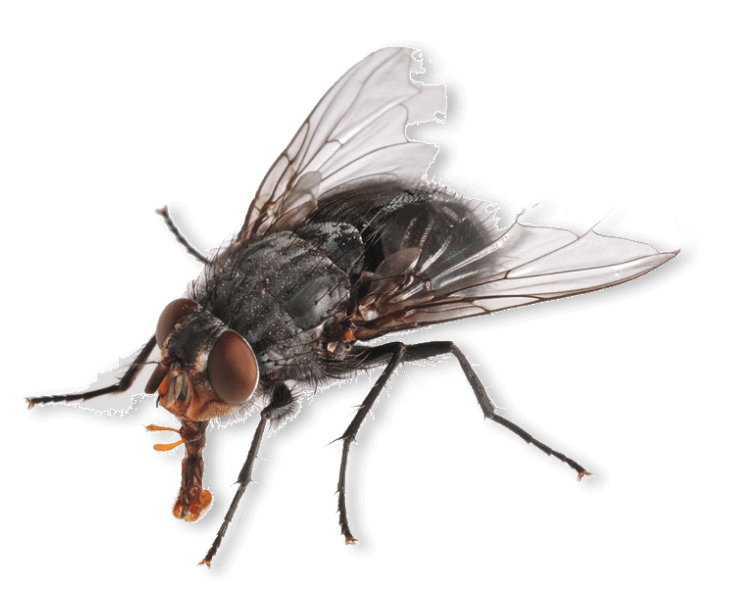
Fly Identification
Call Now 800-901-1102

What’s a Fly?
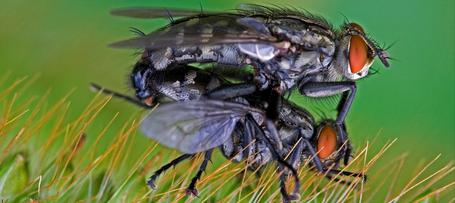
The common house fly and other types of “filth flies” are nuisance pests, but their control is most important because of their potential to harm humans and animals as they carry a significant number of diseases. House flies can spread diseases such as food poisoning and dysentery.
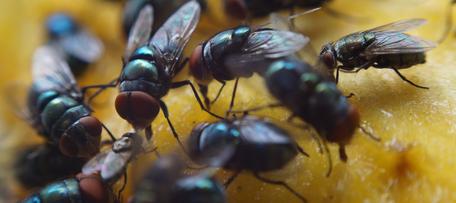
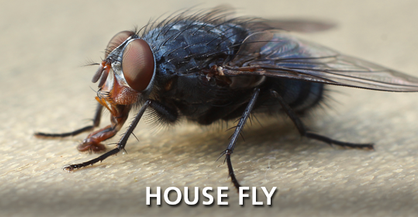
House Fly
The common house fly is a dull gray fly, ¼-inch long with four dark stripes on the middle section (thorax) of its body. House flies typically lay eggs on animal feces and garbage. White, legless maggots (the larval stage) hatch from the eggs and grow to about ½ inch. When fully grown, maggots crawl away from their food source to undergo the pupal stage. They form a dark brown cocoon, known as a puparium, and later emerge as adult house flies that can fly one or two miles in search of suitable egg-laying sites.
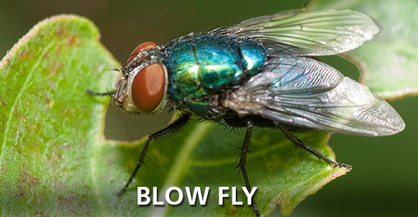
Blow Fly
Blow flies are so-called because the larvae develop inside the bodies of dead animals, causing the carrion to have a bloated appearance. They also are attracted to garbage. Blow flies are about the size of house flies or slightly larger. They have been called “bottle flies” because their shiny blue and green color resemble colored glass bottles, though some species are shiny black or bronze. Large numbers of these flies indoors usually indicates the presence of a dead animal such as a mouse or bird inside the structure.
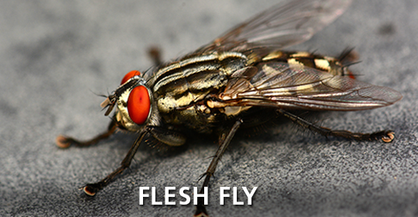
Flesh Fly
Appropriately named, flesh flies usually seek carrion or scraps of meat on which to lay their eggs. Like house flies, adult flesh flies are dark-colored (gray or black). Common species have three dark stripes on the thorax. They are slightly larger than house flies and have a checkerboard pattern on the abdomen.
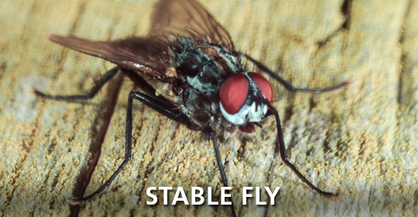
Stable Fly
While not always found in filthy situations, stable flies deserve mention because both sexes feed on the blood of animals, including humans, often biting around the ankles. The bites are painful but are not known to transmit disease to humans. Females lay eggs in rotting straw and manure, moist piles of animal feed and yard waste.
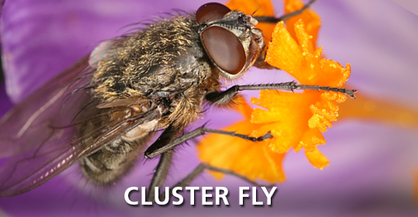
Cluster Fly
Not associated with filth, cluster flies are mentioned here because they are a common household pest. They also resemble house flies, but hold their wings parallel to the body, not in a triangular configuration as house flies do. Cluster flies are covered with fine golden hairs and have no stripes on the thorax. These flies are unusual in that they lay eggs on earthworms. The larvae consume the worms. In the fall, adult cluster flies often invade homes, especially attics, for a warm, sheltered spot in which to spend the winter. Unlike other filth flies, the principal means of controlling cluster flies is exclusion, that is, sealing buildings to prevent their entry.
 800-901-1102
800-901-1102